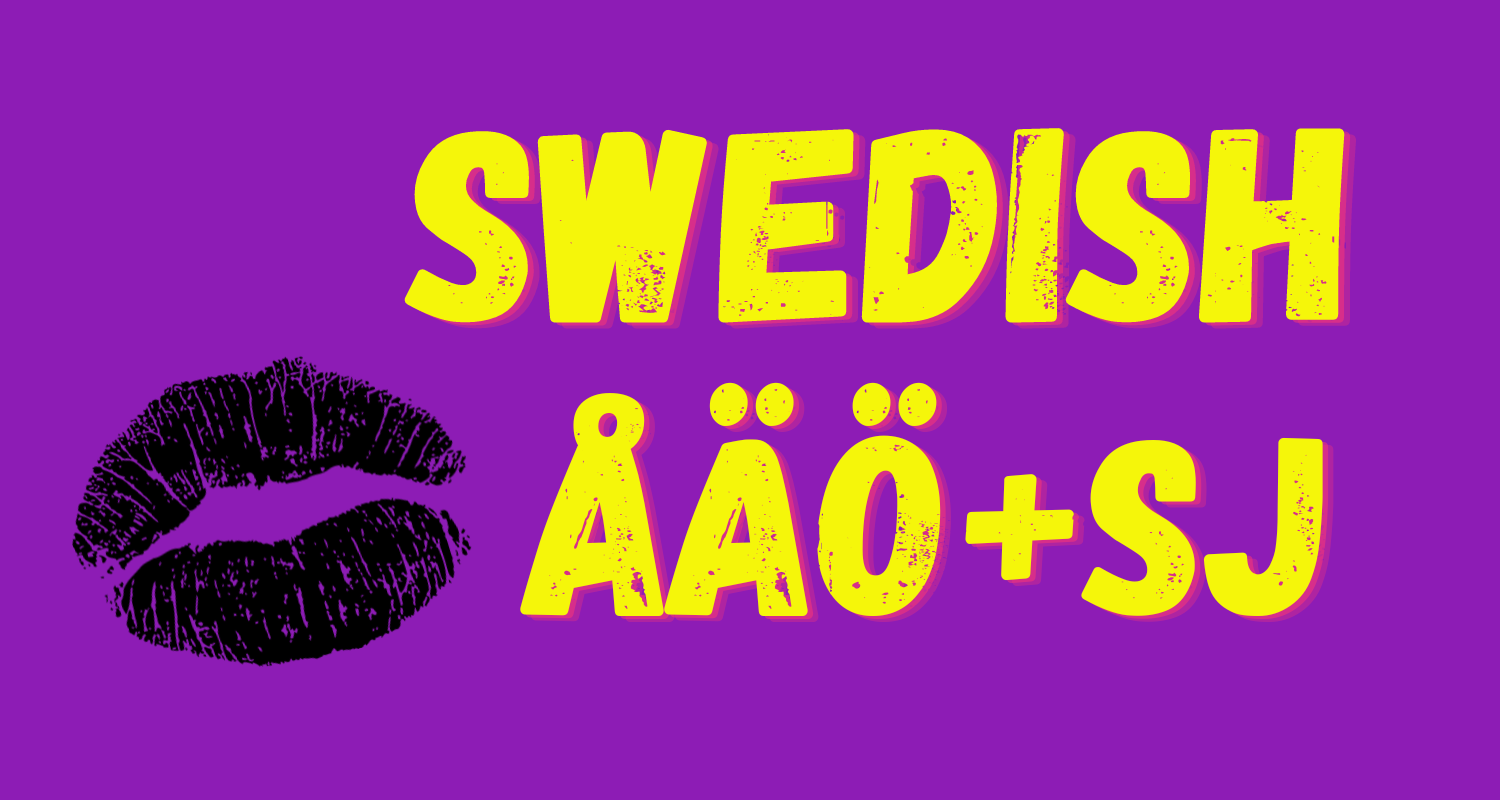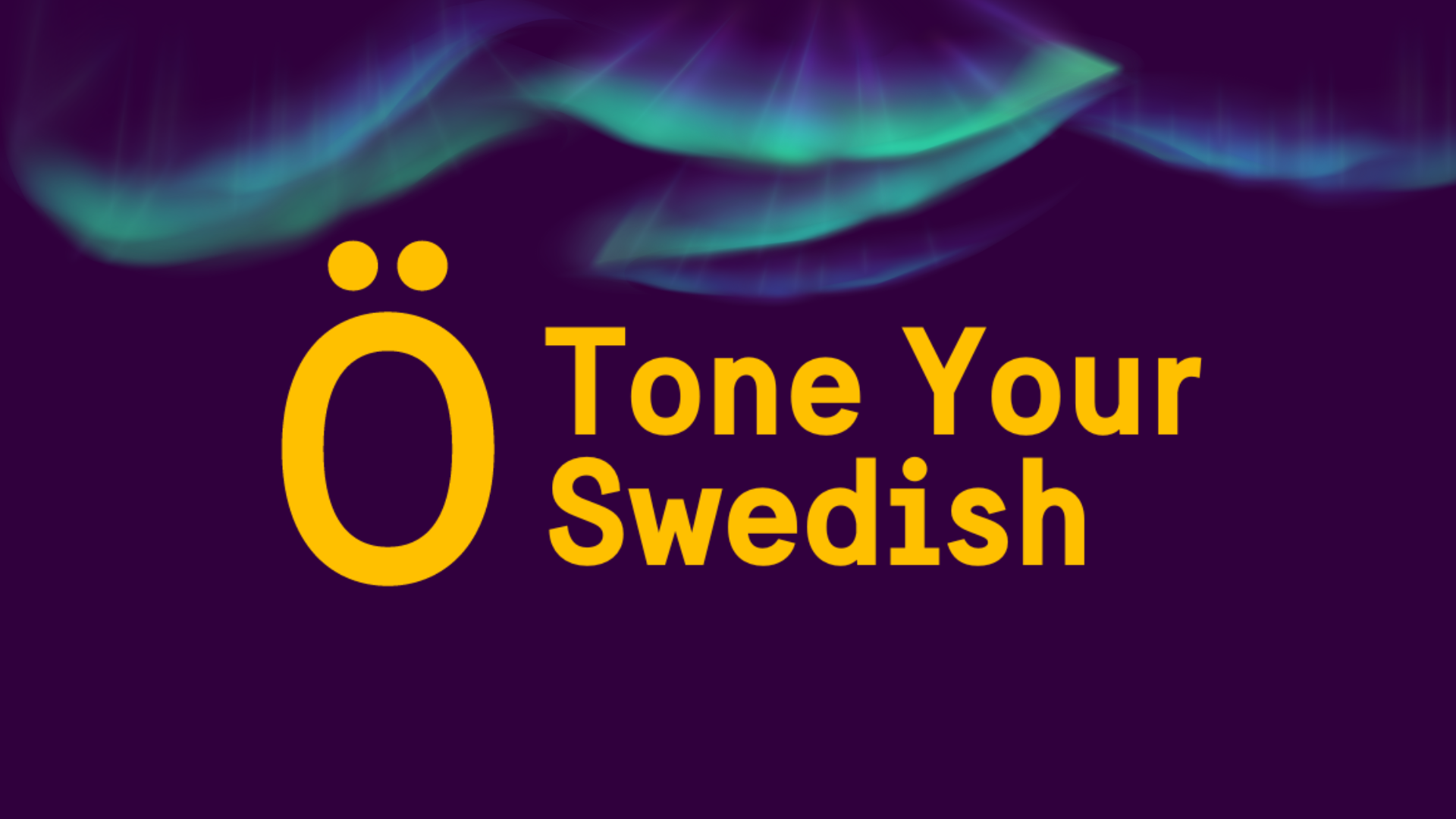Would you like to learn or improve how to actually say those last three confusing letters in the Swedish alphabet? We’re talking about the Swedish vowels Å Ä Ö.
Swedish has 9 vowels in the alphabet! Apart from the ‘extra’ letters Å Ä Ö, we also consider Y as a vowel. And all our 9 vowels have two sounds each; a long and a short sound. It’s really important to get these sounds right. If you don’t, you can easily be misunderstood.
What you need is a system for how the Swedish sounds are actually created. Physically. In your vocal tract.
When you’ve learnt how to work with your lips, tongue and larynx, you will begin to FEEL (not just hear) how Swedish actually sounds.
In our course Tone Your Swedish, we teach all the Swedish phonemes as well as intonation and melody. Click here to read more about Tone Your Swedish.
A few words about Å, Ä and Ö
ÅÄÖ come at the end of the alphabet, after Z.
Sometimes it can be easy to think of them as variations on A and O. But they are not. Just in the same way that an R is not a variant of P. We would never say that R is a P with an extra dash. They are different sounds in the mouth, and have different positions of the tongue and lips. And it’s exactly the same with Å, Ä and Ö.
Å
Here is the first one of the three extra vowels in Swedish. You can think of the Å as the ‘au’ sound in (British accent) ‘Paul’. Indeed, some Swedish Pauls actually spell their names Pål. The lips are rounded and pushed forwards, and the tongue is quite low (but not as low as in a long Swedish A). This sound is also used in Norwegian and Danish.
Ä
You can think of this letter as the English ‘ai’ in ‘pair’, or ‘hair’. The lips is spread quite wide, a bit more like a smile than when saying ‘pair’. The back of the tongue is slightly higher than in Å. This sound is also used in German, Finnish and Estonian (and of course in Norwegian and Danish, but there it’s spelled Æ).
Ö
Finally, the Ö is somewhat similar to the English sound ‘i’ in the word ‘bird’. Or ‘u’ in the word ‘fur’. Or ‘ea’ in the word ‘heard’. You need to round your lips and push them forwards, like a trumpet-shape. The back of the tongue is in the middle of the vocal tract. Ö is also found in German, Finnish, Hungarian and Turkish.

Swedish Å Ä Ö + SJ
How to pronounce the Swedish letters ÅÄÖ + SJ
377 students enrolled
Last updated May 21st, 2024

Tone Your Swedish
Unlock the secrets of impeccable pronunciation through anatomy and MRI
111 students enrolled
Last updated Apr 16th, 2024





